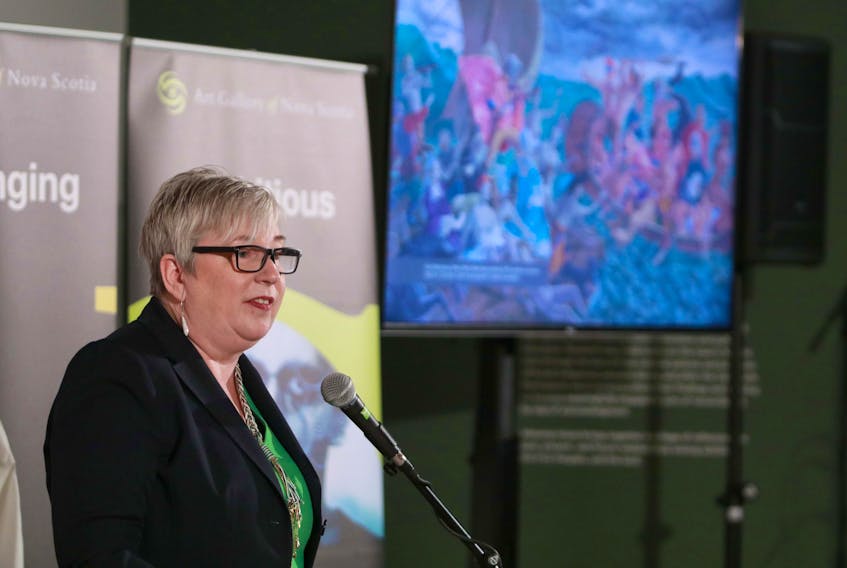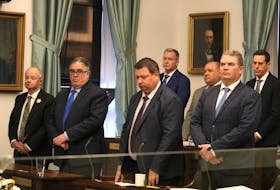What do an art gallery, potato sacks and a growing sinkhole have in common? They were all the targets of recent federal funding announcements.
In fact, over the two week Easter break in the House of Commons, Atlantic MPs handed out at least $116 million for various projects and causes in ridings across the region.
Cape Breton University political science professor Tom Urbaniak said Canadians can expect to see a proliferation of funding announcements over the next few months in the lead up to the fall federal election.
“Across the country there will be hundreds of such announcements, large and small. ... You'll almost always see higher numbers election year. This is this has been the case since time immemorial in Canadian politics,” Urbaniak said.
“The point is to attract local media coverage to try to demonstrate relevance and a connection between the big themes of the budget and actual spending on the ground.”
Duff Conacher, co-founder of Democracy Watch and adjunct professor of politics and law at the University of Ottawa acknowledged that $116 million in funding is a lot for the region in a short period. He said attempting to win voter support with taxpayer money ahead of an election is something all governing parties have been guilty of, but there are rules surrounding how they go about it. For example, in 2017, Canada's elections watchdog ruled that former Harper cabinet minister Pierre Poilievre broke election rules by wearing a golf shirt emblazoned with the Conservative Party of Canada logo at a childcare benefit announcement in Halifax.
Sometimes, Conacher said, governments will even re-announce of pockets of money that were already allocated as part of a larger program, or announce funds that may not be available for a particular project until years down the road when that government may or not be in power.
“They often win the spin battle with these announcements, because there is some event tied to it and it ends up getting reported in the media,” he said.
The funding allocation announcements for the Atlantic region over the period from Friday, April 12 to Monday, April 19 ranged from relatively minor -- $68,500 to go towards geophysical testing of a sinkhole that opened up in the downtown core of the Nova Scotia community of Oxford, to much larger, like the $56.9 million provided to assist with dike upgrades in Nova Scotia.
The feds also offered up $30 million to help build a new art gallery in Halifax, more than $6 million for women’s centres in New Brunswick, Newfoundland and Nova Scotia, $5 million to Memorial University to expand Holyrood Marine Base, and $4.9 million the University of Moncton to aide in research and commercialization in disease screening and treatment.
There was a smattering of smaller funding announcements to help build community infrastructure such as theatres and farmers markets as well loans to help businesses that, as the press releases put it, are investing in the region, like the $5.6 million offered up to help Cooke Aquaculture to expand its commercial operations, $1.5 million to help rebuild a peat moss plant in New Brunswick that burned down, and $237,500 to help a potato bag company modernize its production line.
“They often win the spin battle with these announcements, because there is some event tied to it and it ends up getting reported in the media.”
- Duff Conacher, Democracy Watch co-founder, professor of politics and law at The University of Ottawa
ome of the funding was provided as grants, some loans (both repayable and non-repayable), offered through various government departments and programs, and often cost-shared with commercial and/or government entities.
But most of these allocation announcements shared one thing in common: they came with an official government event to trumpet the funding.
Aaron Wudrick, director of the Canadian Taxpayers Federation said holding public events to amp up coverage of every announcement is costly and mostly unnecessary, especially when a minister or parliamentary secretary is flown in for the occasion.
“It’s kind of getting out of hand with the physical events. Spend money if you must, do you have to add insult to injury?” Wudrick said.
Wudrick said politicians will always try to maximize the political value of their announcements, but it’s worth asking if there’s a more effective and efficient way to do that.
“It's a digital world, [governments] seem to understand in a lot of other ways that their messaging needs to be [...] online, so maybe we can start looking at announcements being done the same way,” he said. “It would certainly save taxpayers some money.”
It’s worth noting that the $116 million total cited in this story is just an estimate. The figure was calculated by sorting all announcements in the federal government’s news portal by region and then manually adding up the funds highlighted in each, but there were several examples of announcements that were not flagged properly on the website and did not show up in this search, so the figure could be higher.
Urbaniak said the Easter break funding flurry is a prelude for what Canadians can expect over the next few months, especially after the house rises for the summer, and that voters should try to sift through the posturing with a critical eye.
“It’s up to us to as engaged citizens to do a little bit of research ourselves,” he said. “So to see if something is being announced more than once, or to look into whether the funding flows now or whether this is anticipatory funding, and to analyze what the impact actually will be on our communities.”
RELATED: As election nears, expect more campaigning piggybacking on parliamentary business









